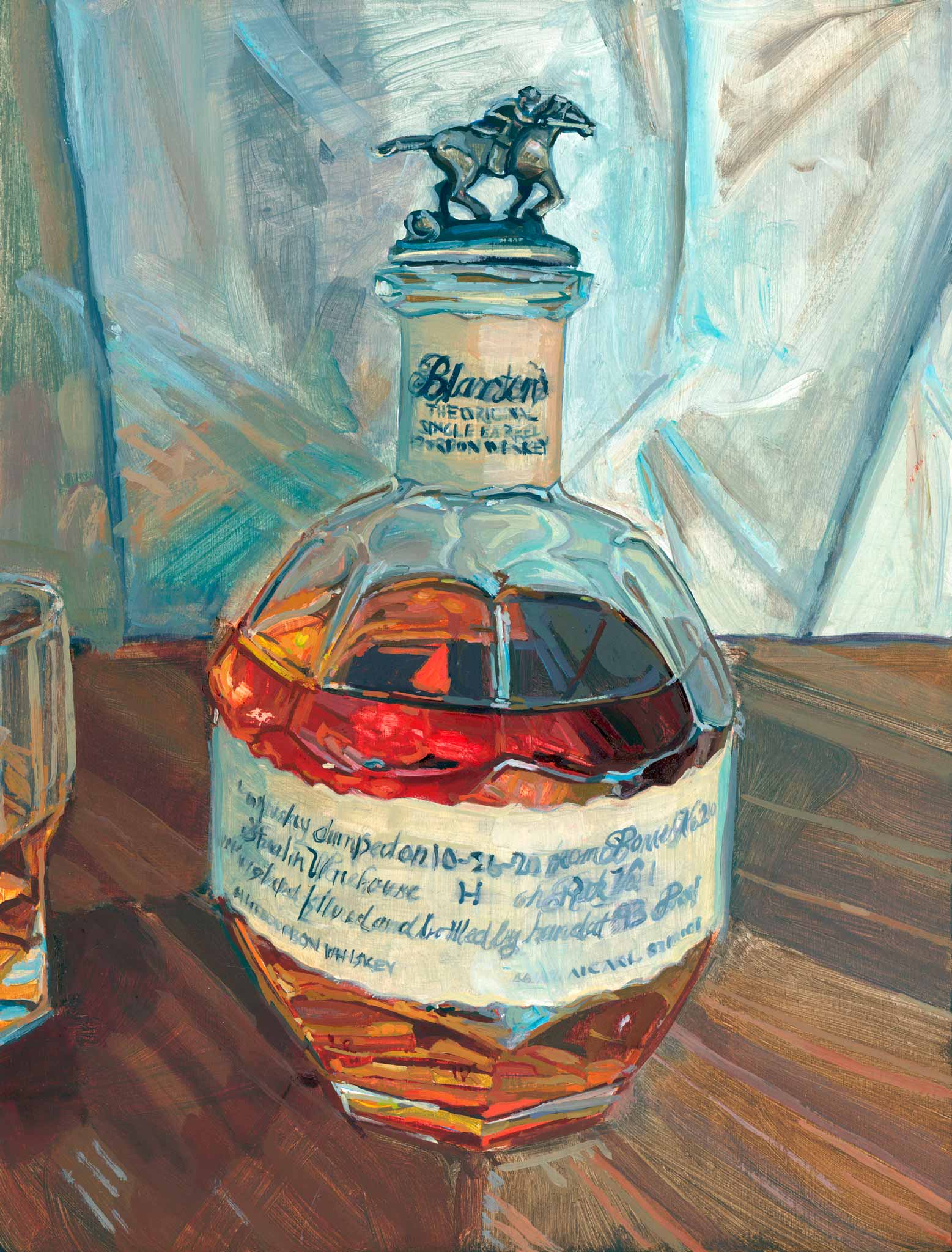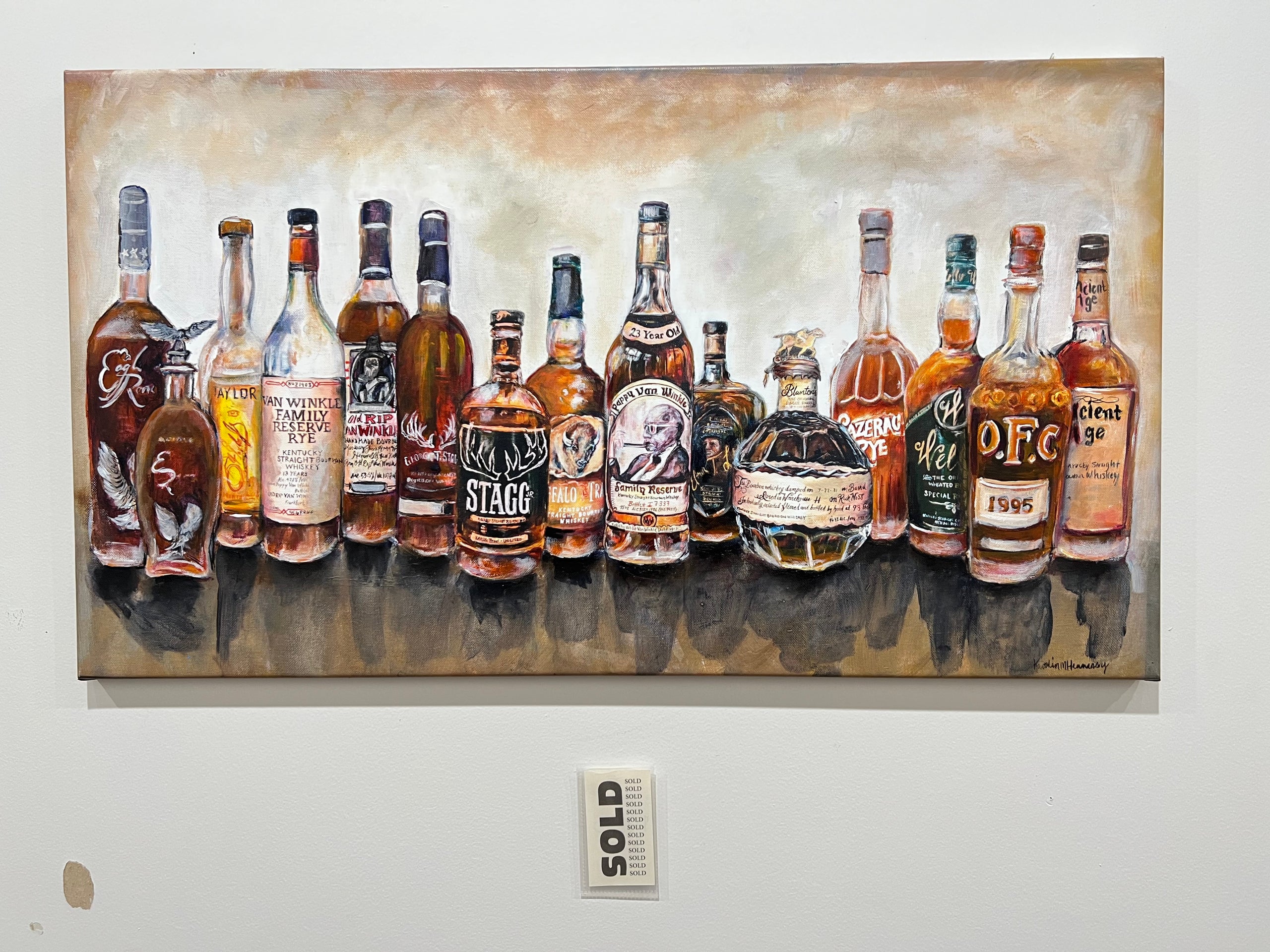Recording the Significance of Whiskey Art With Distinct Visual Depictions and Designs
The art of scotch prolongs past the fluid itself, manifesting with a range of aesthetic depictions that encapsulate its storied heritage and craftsmanship. What stays to be uncovered is how these developing designs mirror not just the whiskey itself yet likewise the altering landscape of imaginative analysis. Whiskey Art.
The History of Scotch Art

As bourbon production spread, so as well did the need to elevate its experience through art. From the complex engravings on very early barrels to the fancy tags of modern bottles, each component shows an one-of-a-kind imaginative vision, working as an aesthetic story of the whiskey's heritage.
In the 18th and 19th centuries, the increase of the industrial transformation better boosted whiskey art, causing ingenious product packaging and advertising and marketing that caught consumer attention. Designers and musicians began try out aesthetic appeals, imbuing whiskey-related images with symbolic significances that shared notions of workmanship, tradition, and neighborhood.
Today, whiskey art continues to evolve, blending typical approaches with modern art kinds. Realism Art. This recurring discussion between the spirit and its aesthetic representation emphasizes the enduring bond between whiskey and culture, enhancing the overall experience for enthusiasts worldwide
Iconic Bottle Styles
While lots of variables add to the allure of bourbon, renowned container styles play a crucial role fit customer assumption and boosting the overall experience. The aesthetic discussion of whiskey containers is not merely an aesthetic factor to consider; it acts as a bridge between the product and the customer, evoking feelings and setting expectations.
Distinct forms, products, and closures can raise a whiskey brand name's identity, making it quickly recognizable on crowded shelves. As an example, the timeless Glenfiddich container, with its elegant conical shape, conveys a sense of custom and craftsmanship, while the strong, modern design of the Balvenie bottle shows advancement and elegance. The usage of tinted glass or distinct textures can recommend the quality and character of the bourbon within.
Iconic styles usually include components of social heritage, signifying the brand name's history and link to its origins. Brands like Jack Daniel's use an uncomplicated, robust style that reverberates with its American bourbon heritage. Eventually, the impact of bottle layout prolongs past mere performance; it encapsulates the significance of the brand, welcoming consumers to indulge and explore in the rich tapestry of scotch culture.
Label Art Work and Branding
Bottle layouts often set the phase wherefore customers can anticipate, but label artwork and branding play an equally significant role in interacting a bourbon's identity. The tag works as the first factor of call between the product and the customer, encapsulating the significance of the bourbon within its aesthetic aspects.
Efficient tag art work integrates images, typography, and shade to create a story that resonates with the brand's heritage and target market. A tag featuring classic font styles and elaborate images may stimulate a sense of custom and workmanship, appealing to lovers. On the other hand, strong colors and contemporary style components may bring in a younger group seeking advancement and exhilaration.


Photography and Visual Narration
Capturing the essence of scotch via digital photography and visual storytelling is an art type that raises the brand name experience. This tool goes beyond plain product representation, delving into the complex stories here that border each bottle. By using compelling imagery, digital photographers can stimulate emotions that resonate with customers, eventually building a much deeper link to the bourbon brand.
Aesthetic narration in bourbon digital photography commonly makes use of abundant textures, lighting, and composition to highlight the distinct qualities of the spirit. The interplay of light and darkness can highlight the amber colors of scotch, while the option of background aspects-- such as rustic barrels or sophisticated glasses-- can strengthen the brand name's heritage or way of living organizations.
In addition, recording the ceremonial elements of whiskey intake, from the putting to the sampling, welcomes audiences into a sensory experience, allowing them to picture the flavors and aromas that wait for. Each picture not just showcases the item but additionally informs a story of craftsmanship, custom, and the moments that scotch can enhance - Whiskey Art. Hence, digital photography comes to be an effective tool in expressing the identification of bourbon brands, positioning them within the more comprehensive cultural landscape
Emerging Patterns in Whiskey Art
The advancement of scotch art is progressively formed by modern fads that reflect broader societal shifts and consumer choices. One famous trend is the assimilation of sustainability into art practices. Artists are currently utilizing recycled materials and environmentally friendly procedures to develop whiskey-themed pieces, reverberating with environmentally aware consumers. This shift not just highlights the significance of sustainability however additionally enhances the story bordering whiskey manufacturing.
In addition, digital art has risen in appeal, allowing for innovative representations of scotch. Musicians are leveraging technology to craft immersive experiences, such as increased truth installments that involve viewers and offer a much deeper understanding of bourbon's cultural relevance. This fad also includes social media sites systems, where aesthetically striking material garners attention and promotes neighborhood amongst fanatics.
Furthermore, cooperations between whiskey brands and artists are becoming much more widespread. These collaborations generate limited-edition click product packaging layouts and unique art work that commemorate both the workmanship of bourbon and the creativity of musicians. As bourbon art remains to evolve, these arising patterns will certainly shape its future, fostering a dynamic intersection of culture, sustainability, and technology within the bourbon community.
Verdict
In conclusion, the art of bourbon incorporates a varied variety of graphes that show its rich heritage and workmanship. From legendary container designs and intricate tag art work to compelling digital photography, each component adds to a wider narrative that boosts the customer's experience. As emerging trends, such as electronic art and sustainability, remain to shape this artistic landscape, the complex identification of scotch stays a withstanding source of cultural connection and expedition.

In verdict, the art of scotch encompasses a varied array of aesthetic representations that mirror its abundant heritage and craftsmanship.